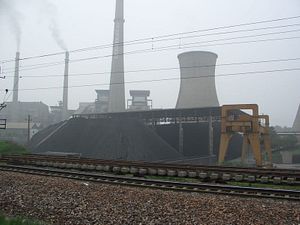Everywhere you look in China, progress in protecting the environment is evident. China rang in 2015 by adopting a new, stronger environmental protection law. The leadership has issued tough new targets for regional coal consumption and air quality. Chart-topping levels of investment in clean energy continue despite plummeting oil prices. And courts are levying significant fines on polluting enterprises to help force improved practices. Yet all of this effort will come to naught if the continued mismatch between the leaders’ ambitions and the capacity of local officials to realize that ambition is not addressed. While there are a number of reasons for weak implementation of central laws and directives—corruption, lack of interest, and misaligned incentives among them—at heart Beijing demands too much and invests too little in the fundamentals of environmental protection. Local officials are ill-equipped to meet the ever-growing list of environmental challenges central officials set before them.
Examples of poor implementation of environmental regulations abound. Caixin recently reported, for example, that Henan, Hubei, and Shaanxi provinces failed to complete 90 percent of the 474 pollution prevention projects planned along the middle route of the South-North water transfer canal from Danjiangkou Reservoir, in the central province of Hubei, to Tianjin and Beijing. The former director of the Yangtze River Water Resource Protection Bureau says not to worry—he rates the water class two (clean). Yet his rating system excludes nitrogen which, if included, would render the water class four (unfit for direct contact with people). The result is that billions of dollars are being spent to transport polluted water from one location to another.
Beijing’s large-scale effort to establish a regional emissions monitoring center that will include Beijing, Tianjin, Hebei, Shandong, Shanxi, and Inner Mongolia is also already raising concerns outside Beijing. The head of Hebei’s Environmental Protection Bureau noted that its team for exhaust emission monitoring has fewer than 50 members, while Beijing alone has 700. The cross-cutting lines of responsibility also mean that monitoring and levying fines belong to different bureaus; local officials are calling for more guidance and more money.
In some cases, localities resort to desperate measures to fulfill Beijing’s environmental targets, while doing nothing to address the real problem at hand. According to a World Bank study, in attempting to meet Beijing’s energy intensity targets, one county in Hebei province resorted to shutting off the electricity to entire villages; and one hospital was forced to close every four days. As the report further notes, a number of enterprises switched to diesel-operated generators in order to continue operating in the face of electricity rationing, making the pollution problem even worse.
In addition, old-style evasion by enterprises complicates enforcement efforts. As one provincial environmental bureau official revealed: “The pollution doesn’t just appear overnight. The sulfur and nitrate scrubbers are so expensive now, the bosses will just not use them… they turn the scrubbers on during the day, but not at night.”
Beijing shows no sign of letting up or changing course. Toward the end of 2014, central officials issued yet another set of ambitious initiatives calling on local officials to “scrap rules that hinder environmental law enforcement by June 2015, complete a thorough environmental inspection and set up a supervision mechanism by the end of 2015, and cancel all illegal construction projects by the end of 2016.”
Local officials are clearly feeling enormous pressure from Beijing to take action to improve the country’s environment, and that is a good thing. Now Beijing needs to do its part by spending more on hiring and training environmental protection workers, ensuring that local environmental protection bureaus have the appropriate equipment to monitor polluting factories, and providing not only targets and timetables but also the institutional infrastructure to make sure that those targets are met. In 2013, Beijing spent almost 10 percent less on environmental protection than it did in 2012; moreover, environmental economist Shi Lei stated that tackling China’s environmental problems “effectively” would require spending nearly twice as much as Beijing is currently budgeting. Providing the necessary human and financial resources to those on the front-line of environmental protection is only a first step in Beijing’s newly declared “war on pollution,” but it is an essential one. Local officials are right to say, “Show me the money.” Until then, blue skies and clean water will likely have to wait.

































